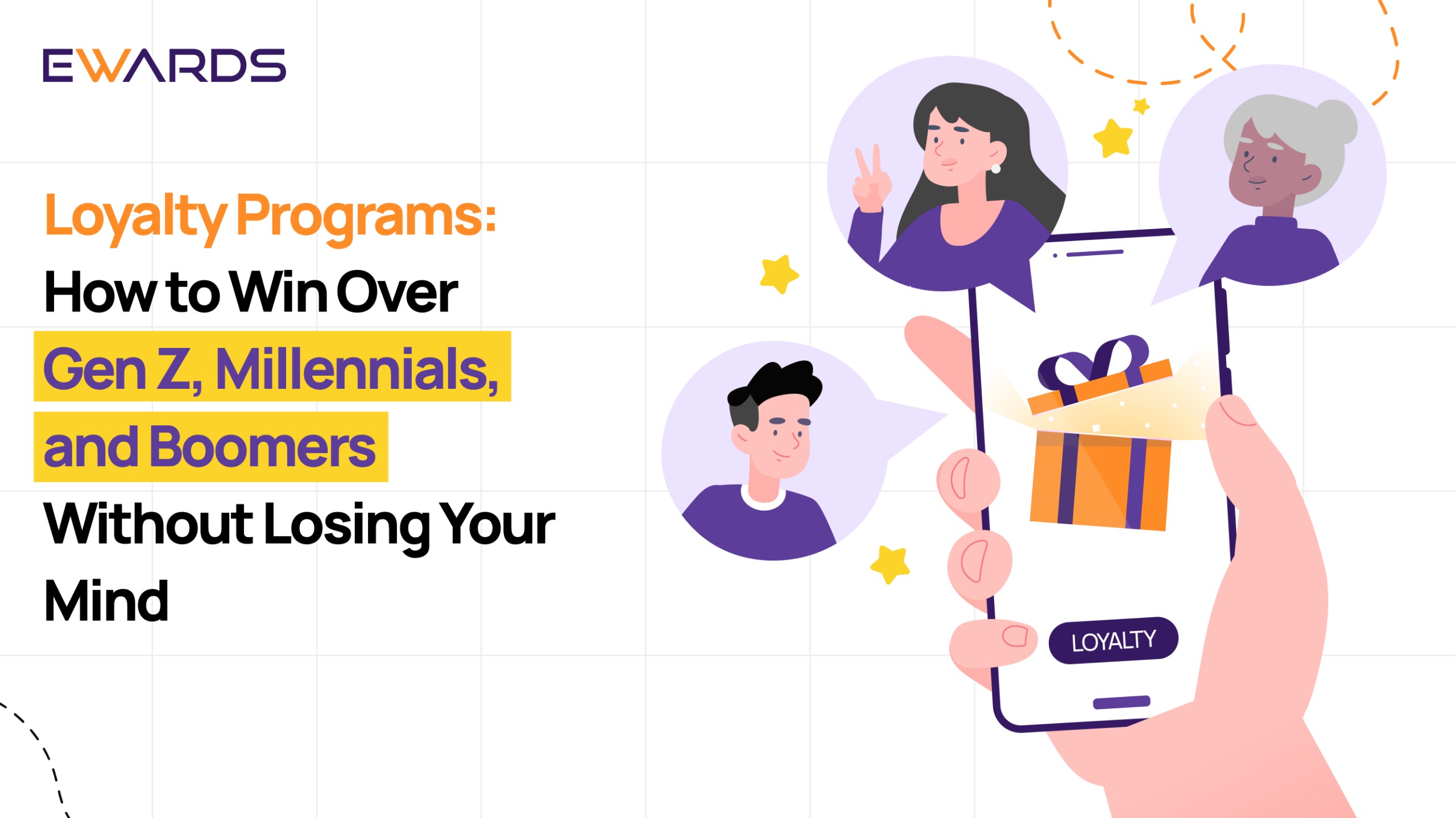
Did you know that the global loyalty management market amounted to 11.71 billion dollars in the year 2023? (Statista)
Yet, most brands are still struggling to engage customers across generations. In an age where customer preferences are constantly shifting, mastering the art of loyalty requires more than just offering discounts — it requires understanding the psychology, technology, and evolving behaviors of each generation.
So, how do you ensure your program isn’t just another generic offer but one that truly resonates with the diverse groups of today’s consumers?
In this blog, we will try to understand how to meet customer expectations with generational changes in loyalty programs.
Generational Engagement with Loyalty Programs
Loyalty programs have been around for decades, but let’s face it — they’ve come a long way. Gone are the days when a punch card or a simple 10% off coupon was enough to keep customers coming back. Today, loyalty programs are evolving at lightning speed, and if you want your brand to thrive, you need to understand that Gen Z, Millennials, Gen X, and Baby Boomers all have very different expectations.
Imagine this: Your brand offers the same generic rewards to all customers — a set of points that you can redeem for discounts. Seems simple, right? But here’s the catch: Not every generation sees the same value in that reward. What appeals to one group could turn another group off completely. It’s all about psychology, personalization, and motivation.
For example, did you know that 80% of consumers are more likely to stick with a brand that offers personalized rewards? (Epsilon, 2018) But here’s the twist — personalization doesn’t mean the same thing for everyone. While Baby Boomers may be all about the tried-and-true rewards like discounts or cashback, Gen Z craves experiential rewards or loyalty programs tied to causes they care about, like eco-friendly initiatives or social justices.
Key Insight: As the market becomes more fragmented, understanding these generational distinctions can drive deeper connections, higher engagement, and ultimately, increased revenue for your brand.
Digital First Loyalty Shoppers: Gen Z and Millennials
Did you know that Gen Z is more likely to switch loyalty programs if they aren’t digitally engaging enough? This generation is no longer just tech-savvy — they are digitally native, and their loyalty behavior reflects this. With over 65% of Gen Z consumers seeking mobile-friendly, gamified loyalty experiences (Loyalty and Rewards Co), brands that fail to deliver digital-first engagement risk alienating this massive market segment.
This generation expects the brand to fit into their life on an emotional and value level while also providing them with customary rewards. They are also the ones who are least likely to sign up for a loyalty program but are the most engaged and loyal members if they do join the program.
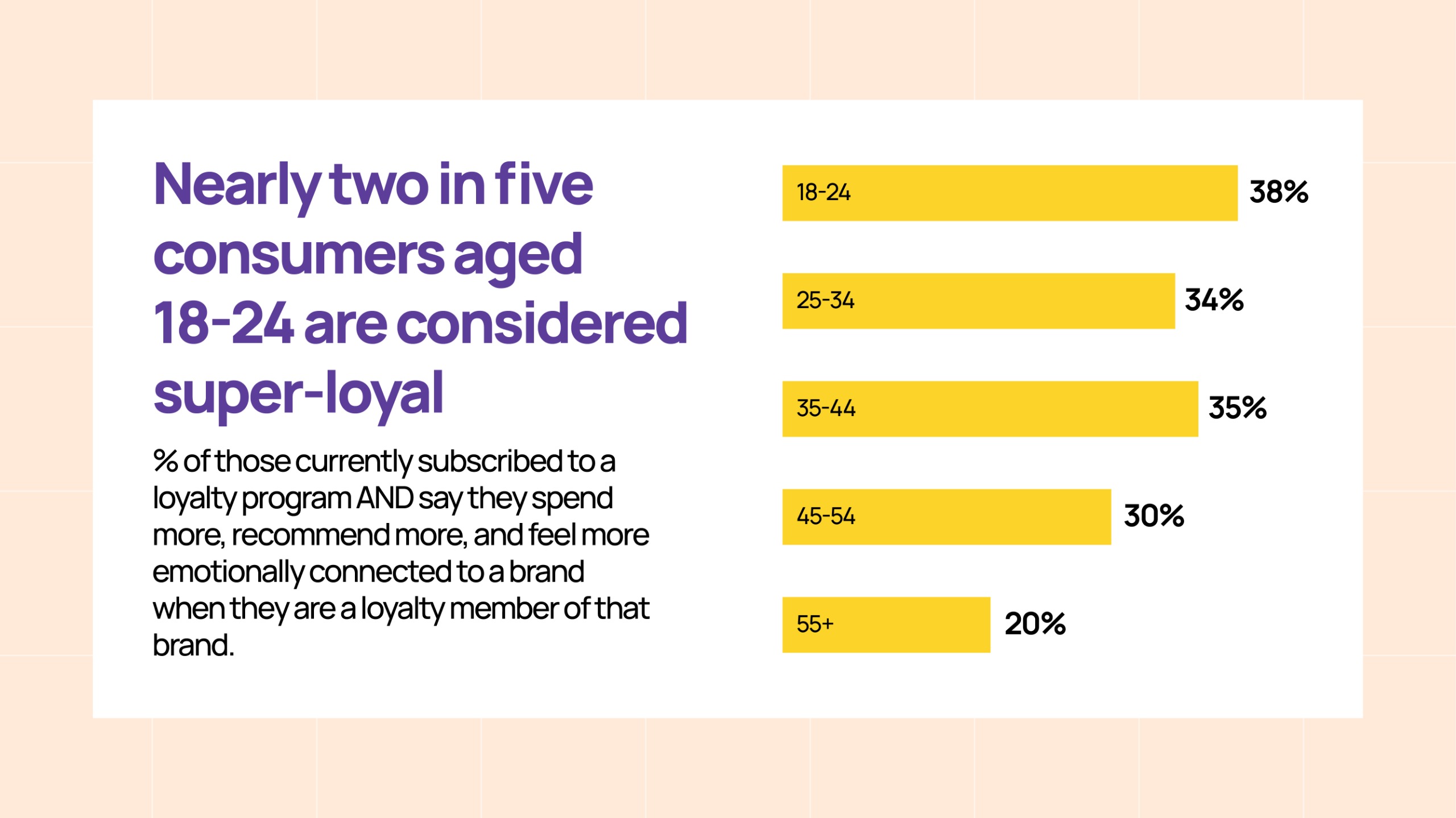
Figure: Consumer Age & their Loyalty
Source: (YouGov.com)
For example, the Sephora Beauty Insider Program offers gamified rewards and a sleek app experience that appeals to younger consumers. Through exclusive in-app perks and social sharing features, Sephora has successfully engaged Gen Z and Millennials, fostering a sense of community and exclusivity. Millennials constitute 23% of the world’s population (MSCI). According to a Survey of Reward Port, 97% of Millennials said that they would engage with loyalty programs through their smartphones. But, they value personalization and experiential rewards. For them, a loyalty program is not just about points or cashback — it’s about creating experiences that reflect their values and help them save money. A prime example is Airbnb, which introduced a loyalty program with tailored rewards based on users’ past experiences, allowing them to unlock unique travel experiences, not just discounts.
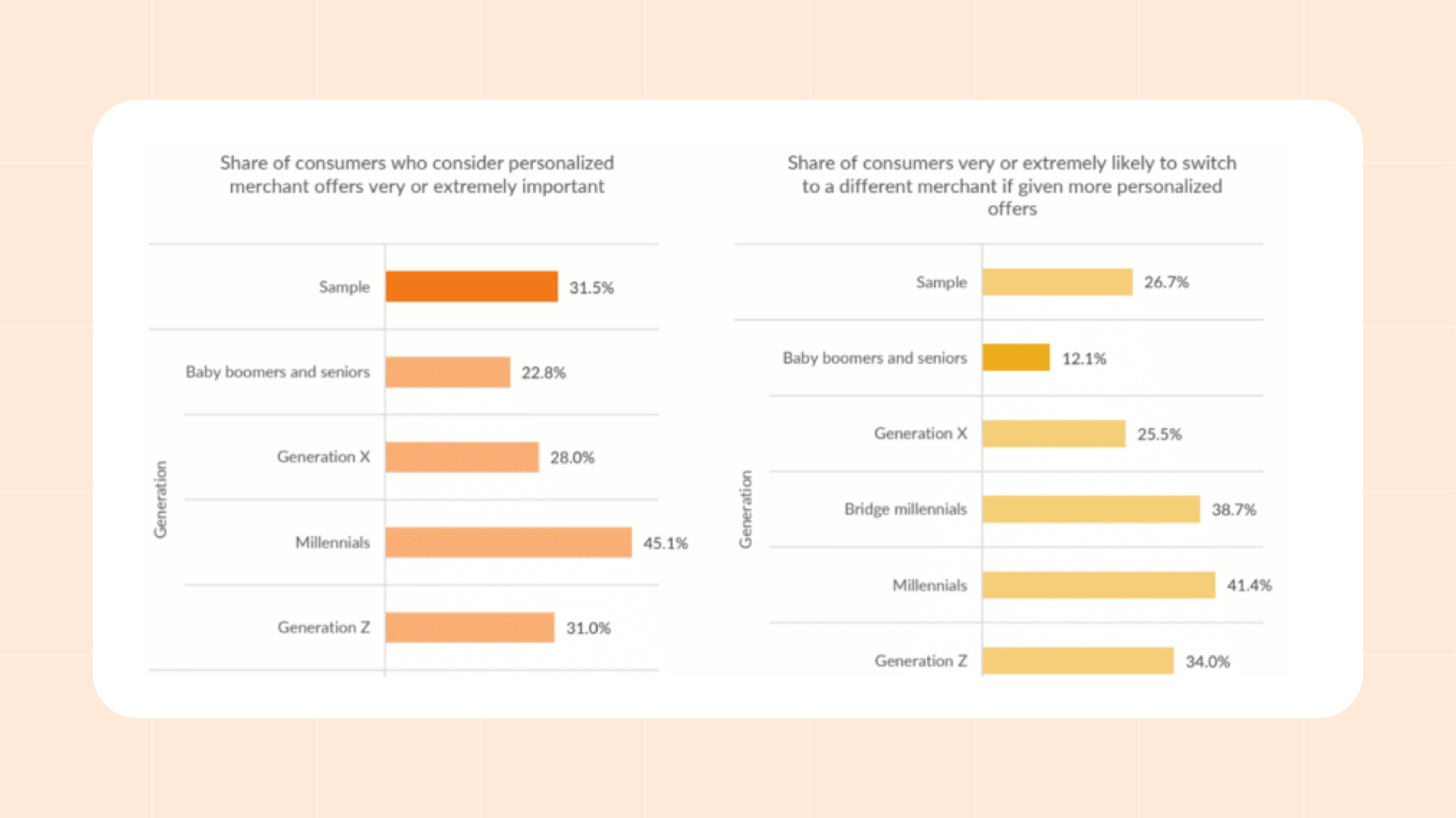
Figure: Impact of Personalization on Generations
Source: PYMNTS
Key Insight: Millennials and Gen Z are driven by digital, personalized, and experiential rewards. For them, loyalty isn’t just about points — it’s about connecting with a brand on a deeper level.
Loyalty with Simplicity & Value: Baby Boomers & Generation X
When it comes to Baby Boomers and Gen X, simplicity, trust, and longevity are the main factors influencing their loyalty program engagement. Did you know that Baby Boomers, despite being the least digitally inclined, are actually the most loyal generation when they find a program they trust? With loyalty to brands at an all-time high for this group, the key to winning them over is offering straightforward, value-driven rewards.
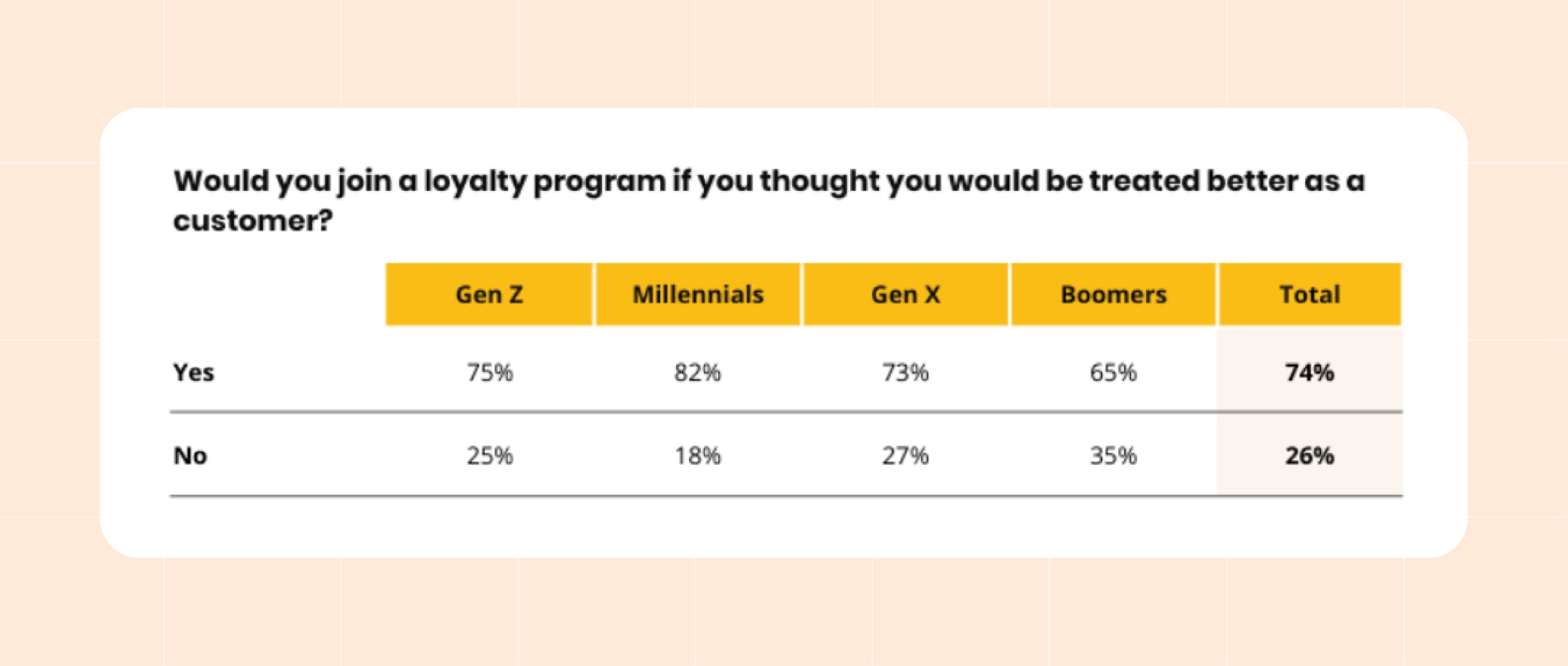
Figure: Loyalty Program and Consumer Habit
Source: (Cordial, 2023)
For instance, CVS‘s ExtraCare program is one of the most successful in this category, offering cashback rewards and discounts across a wide range of products. Its simplicity resonates with Baby Boomers, who appreciate ease and value over complexity.
Meanwhile, Gen X, with around 65 million worldwide population, is more comfortable with technology than Boomers. They value flexibility and the ability to redeem rewards at multiple brands. Loyalty programs that offer multi-brand rewards, like Starbucks Rewards, which allows points to be redeemed for coffee or merchandise, are particularly attractive to this group.
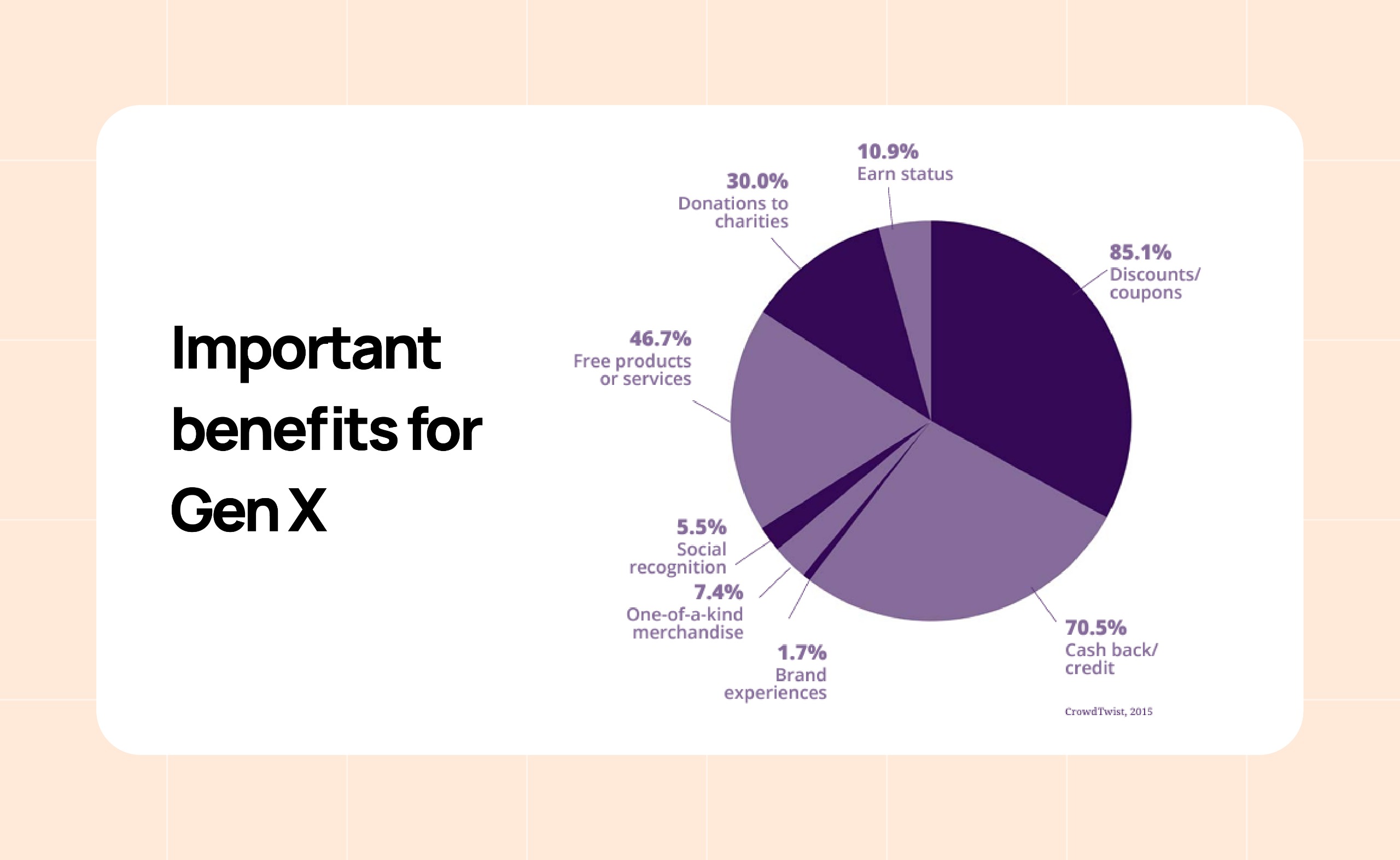
Figure: Important benefits for Gen X
Source: (Crowd Twist, 2015)
Key Insight: While younger generations are looking for digital-first engagement and experiences, older generations prefer simplicity and tangible value. Brands that prioritize both trust and ease of use will build lifelong loyalty.
Cashback, Points, and Perks: What Different Generations Want
When it comes to loyalty programs, there’s one common denominator that resonates with every generation: rewards. Whether it’s cashback, loyalty points, or exclusive perks, the desire for tangible benefits is universal. However, the type of reward and how it’s perceived varies significantly depending on the generation.
- Cash
Cash is king, no matter your generation. Cash rewards remain the most universally accepted form of incentive for all age groups. But why?
- Boomers and Gen X have a strong preference for cashback and discounts. They view these rewards as highly practical and straightforward. There’s no ambiguity — you earn it, you spend it. Period. They appreciate how easy it is to redeem cashback and see immediate value. Simplicity and flexibility are paramount to their loyalty.
- Gen Z and Millennials, on the other hand, may not be as motivated by cash alone, but it still holds significant appeal when paired with digital integration or personalized offers.
- Points
Points offer a level of flexibility, allowing consumers to accumulate value over time and redeem it across different products or experiences. But how do different generations interact with points?
- Gen Z is particularly driven by flexibility in how they earn and redeem points. They love digital rewards that can be applied across multiple platforms — from travel bookings to e-commerce sites. To them, points represent a savings vehicle for larger experiences or future purchases. They want to control how and when they use their points, which is why they are drawn to programs that integrate with mobile apps and give them real-time updates on their point balances.
- Millennials also gravitate toward points but with a focus on personalization and tailored offers. Points for Millennials are about more than just earning; they are about feeling valued and appreciated by the brand.
- For Gen X, points are valued for practical redemption. They prefer clear, straightforward programs where they can earn and spend without complex rules or requirements. They’re also drawn to multi-brand programs, where they can redeem points across a network of stores or services.
- Perks
Perks elevate a loyalty program from merely transactional to something coveted and desirable. These extra benefits often make customers feel like they’re part of an exclusive group, and every generation wants a piece of that.
- Gen Z values perks that are tied to community-building, exclusive access, and sustainability. They love feeling like they are part of a tribe. Exclusive events, limited edition products, and access to VIP experiences are powerful motivators for this generation, especially when aligned with their values, like sustainability or social impact.
- Millennials are drawn to experiential perks — things like special access to events, early product releases, or members-only content.
Gen X prefers time-saving perks and value-based experiences. They appreciate things like priority service, special customer support, or rewards that enhance their day-to-day lives, such as discounts on groceries, travel, or family services.
The Key to Engaging Every Customer: Flexibility
As the loyalty landscape becomes more competitive, offering flexibility is paramount. Millennials and Gen Z expect to be able to redeem points at various partners — whether it’s for travel, entertainment, or dining. Brands that fail to offer this flexibility risk losing out on an entire segment of highly engaged customers.
This means that the more flexible your program is, the more likely customers are to stick with it. Offering a multi-brand redemption option adds tremendous value and attracts younger and older generations alike.
Loyalty Programs for All Generations
Creating a unified loyalty program that appeals to Gen Z and Baby Boomers is no easy feat. While Gen Z demands sleek, gamified digital interfaces, Baby Boomers prefer straightforward, easy-to-navigate websites and apps. Yet, studies show that 50% of Gen Z shoppers would drop a brand if they couldn’t interact with the loyalty program via a mobile app (Queue.it), while Boomers will disengage if the program is too complex.
A balanced approach is necessary — therefore, brands should invest in intuitive, user-friendly interfaces with seamless mobile integration for younger generations, but keep the core experience simple for older users who value ease over tech-savvy designs.
The Future of Loyalty: Innovate or Fall Behind
As the loyalty landscape continues to evolve at a breakneck pace, the question isn’t whether loyalty programs are important — it’s whether your brand can keep up. In a world where Gen Z is swiping left on outdated programs and Millennials are demanding personalized experiences, the reality is simple: innovate or become irrelevant.
The future of loyalty is about hyper-personalization, experiential rewards, and seamless digital experiences. Brands that fail to adapt to these demands risk becoming the “forgotten reward card” collecting dust at the bottom of your customers’ wallets. So, if you’re not evolving, you’re probably already on the path to “loyalty program extinction”.
The choice is yours: Build a loyalty program that wows or watch your customers swipe away — right into the arms of the competition. Keep innovating, keep listening, and keep your customers coming back for more.
The future is loyal. Will you be part of it?